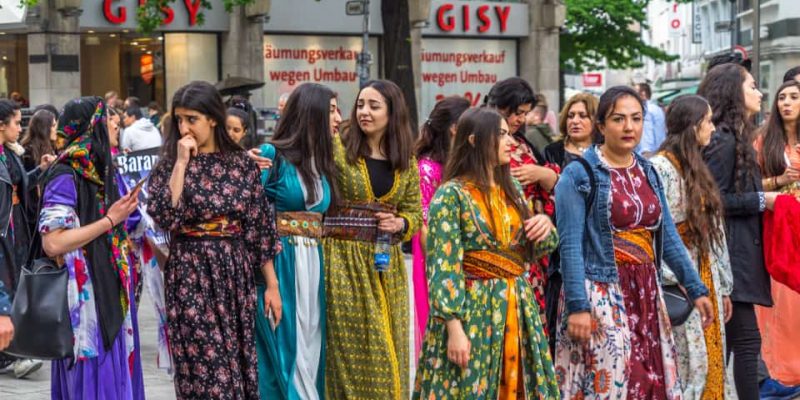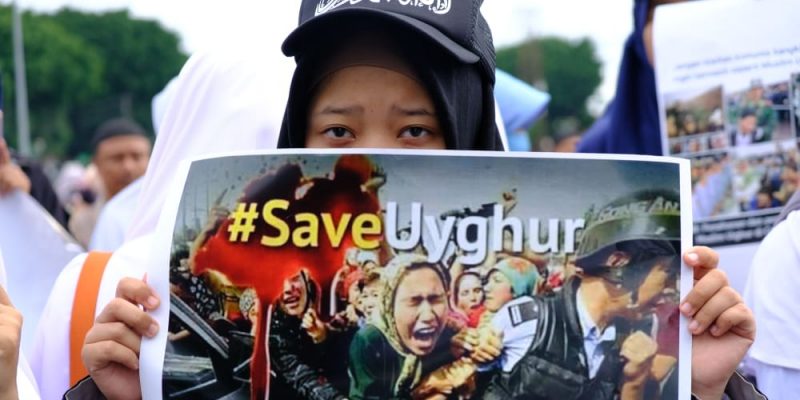We explain what cultural minorities are, their characteristics and examples. Also, the problems they face and the laws that protect them.

What are cultural minorities?
cultural minorities are groups of people who have a cultural identity different from the majority in a given society. These groups can be differentiated by various factors, such as language, religion, customs, traditions or beliefs.
In many cases, cultural minorities face problems such as discrimination, forced assimilation or the loss of their cultural identity and seek to preserve and promote their culture within a majority society.
The term “minority” does not necessarily refer to the numerical size of the cultural group, but rather to his subordinate position vis-à-vis another dominant group whether due to its cultural, economic or political influence. Therefore, a cultural group can be numerically larger than other groups present in society, but be considered a cultural minority because it lives in a subordinate situation compared to a dominant cultural group.
Currently, There are different international regulations aimed at protecting cultural minorities of the different countries of the world, such as the Convention on the Protection and Promotion of the Diversity of Cultural Expressions (2005) of UNESCO. Furthermore, several national constitutions recognize the specific rights of minorities and promote the preservation and development of their cultures.
See also: Cultural diversity
Frequently asked questions
What are cultural minorities?
Cultural minorities are groups of people who have a different cultural identity from the majority in a given society.
What types of cultural minorities exist?
There are cultural minorities that are differentiated by their language, their religion, their history, their customs or their traditions.
What examples are there of cultural minorities?
Some examples of cultural minorities are the Nahua in Mexico, the Garifuna in Central America, the Sinti and Roma in Europe, the San in southern Africa, the Ainu in Japan, the Quechua in Peru, and the Hmong in the United States.
What problems do cultural minorities face?
Many cultural minorities face challenges linked to discrimination, oppression, forced assimilation and the loss of their language and customs.
What laws protect cultural minorities?
Cultural minorities are protected by international laws such as the Universal Declaration of Human Rights, the UN Declaration on the Rights of Persons Belonging to Minorities and the UN Declaration on the Rights of Indigenous Peoples.
Characteristics of cultural minorities
Cultural minorities have different characteristics that can vary depending on the specific context in which they are found. In general, the following features can be highlighted:
- Cultural identity Cultural minorities maintain a cultural identity different from the majority culture in the region or country they inhabit. This identity may include languages or dialects, traditions, religious beliefs, and other social practices.
- Territorial relationship. Sometimes cultural minorities have a connection to a specific region or territory, which may be of historical, spiritual or economic importance to their culture.
- Language. Cultural minorities may speak a language or dialect different from the dominant language in the country where they live.
- Traditions. Cultural minorities preserve traditional cultural practices, festivals and ways of life that are often passed down from generation to generation.
- History. The cultural and social identity of cultural minorities is usually linked to a common history and a specific origin. This may include historical experiences of displacement, colonization or resistance.
- Social structure. Cultural minorities may have forms of social organization different from those prevalent in the dominant majority, including unique forms of leadership, kinship, and social norms.
- Endurance In many cases, minorities fight for the recognition and preservation of their cultural rights, including the right to maintain their traditions and languages, and to receive protection from forced assimilation or discrimination.
Examples of cultural minorities

In the world, there are thousands of groups that are considered cultural minorities in the territories they inhabit. Among them, we can name:
- Nahua in Mexico It is the people descended from the ancient Aztecs who inhabited Mexico before the arrival of the Spanish. It preserves its Nahuatl language and some ancestral customs, despite the predominance of mestizo and Western culture.
- Garifuna in Central America It is an ethnic group that inhabits different parts of Honduras, Belize, Guatemala and Nicaragua. Its culture is the product of contact between Africans, Carib aborigines and Arawaks.
- Sinti and Rome in Europe. These groups are also known as “gypsies” and have a different culture from the majority in the regions they inhabit. They speak the Romani language of Indo-European origin and have their own traditions. They often face discrimination and marginalization in various European countries.
- San in southern Africa This is an indigenous group that lives in different regions in Botswana, Namibia and South Africa. Its members are also known by the name “Bushmen.” They maintain a way of life based on hunting and gathering.
- Ainu in Japan It is a cultural minority that lives in the north of Japan. Its culture and language are different from the Japanese majority, and it has historically faced marginalization and different efforts at cultural assimilation.
- Quechua in Peru It is an indigenous group that lives mainly in the Andean region of Peru, as well as parts of Bolivia, Ecuador and Colombia. Its members preserve their Quechua language and keep many traditional customs alive, despite the influence of mestizo and Western culture in the region.
- Hmong in the United States It is a community of Asian origin that emigrated to the United States after the Vietnam War. Its members preserve their language, customs and cultural practices, adapting to their new Western environment.
Problems of cultural minorities
Cultural minorities can live in social contexts of acceptance, tolerance and respect. However, often face problems of discrimination and racism which manifest themselves in prejudice and unequal treatment.
In some situations, discrimination leads the cultural minority to face structural problems of economic inequality. In this sense, access to resources and jobs is limited. These types of systematic barriers and lack of political representation also play a crucial role, as they can result in an absence of voice in decisions that affect their communities and in policies that do not address their specific needs.
On the other hand, cultural minorities may face direct situations of violence related to their identity. In some cases, the majority culture attempts to impose forced assimilation, in which the cultural minority is pressured to abandon its traditions.
Cultural minority activism
Throughout history, different cultural minorities in different parts of the world have organized to protect their rights and cultural identities. Currently, movements for the rights of cultural minorities seek to make visible the injustices and inequalities they face, such as discrimination and loss of cultural identity.
On many occasions, these movements are self-organized and promote awareness campaigns to make their specific problems visible. Also seek to influence local politics and legislation to achieve recognition of their rights or prevent social practices that threaten their cultural identity.
On the other hand, many organizations work for the preservation and promotion of their cultural heritage. This may include the revitalization of languages that have fallen into disuse, the celebration of traditional festivals, and education about their customs and traditions. In this way, they seek to ensure that new generations continue to value and maintain their unique cultural practices.
Legislation on cultural minorities
At the international level, there are various legislations and agreements that seek to protect the rights of cultural minorities. The Universal Declaration of Human Rights (1948) guarantees the fundamental rights of all people, including freedom of expression and protection against discrimination.
In 1992, the United Nations (UN) signed the Declaration on the Rights of Persons Belonging to National or Ethnic, Religious and Linguistic Minorities (1992). This declaration aims to create tools to guarantee minorities the right to express their cultural, religious and linguistic identity, and ensure their equal participation in public and political life.
Furthermore, the United Nations Declaration on the Rights of Indigenous Peoples (2007) recognizes specific rights to preserve the culture, language and traditions of indigenous peoples. It also seeks to promote their participation in public life and respect for their cultural identities.
In Latin America, there is also international legislation that advocates for the protection of cultural minorities. He Convention 169 of the International Labor Organization (ILO) on Indigenous and Tribal Peoples (1989) ratified by several Latin American countries, establishes rights for indigenous peoples, including respect for their culture and traditions.
The national constitutions of countries such as Argentina, Bolivia, Ecuador and Colombia, among others, recognize and guarantee cultural rights to minorities, promoting their identity and participation in political and social life.
document.addEventListener(“DOMContentLoaded”, (e) => {
var sliderContainer, slider;
sliderContainer = document.getElementById(‘block_f15531b017d3dc2d6344a61634d4d7b6’);
if (typeof initSlider !== ‘function’) {
console.log(‘Swiper haven\’t been loaded’);
sliderContainer.className += ‘ fw scroll-snap’;
return;
};
options = {
direction: ‘horizontal’,
speed: 1000,
slidesPerView: ‘auto’,
// slidesPerGroup: 1,
centerInsufficientSlides: true,
// centeredSlides:true,
spaceBetween: 15,
breakpoints: {
720: {
// centeredSlides: false,
// slidesPerGroup: 2,
spaceBetween: 25
},
},
pagination: {
el: ‘.swiper-pagination’,
type: ‘bullets’,
clickable: true
},
}
slider = initSlider(sliderContainer, options);
})
References
- Barfield, T. (Ed.) (2001). Mediated minorities; Nation, nationalism. Anthropology Dictionary. Bellaterra.
- Campo Aráuz, AL (Ed.) (2008). Assimilation; Minority groups. Basic Anthropology Dictionary. Abya-Yala Editions.
- The Editors of Encyclopaedia Britannica. (2024). Minority. Encyclopedia Britannica. https://www.britannica.com





